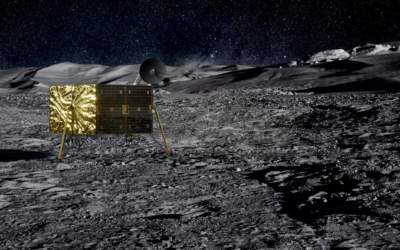We’re landing at the lunar south pole near the Haworth Crater, which is adjacent to the Malapert massif where the change in elevation exceeds 8 km – an elevation very close to Mt. Everest. This diverse topography offers the potential to explore both near-surface and deep reservoirs to detect lunar ice and volatiles, such as methane, carbon dioxide, and ammonia.
Our lunar lander (configuration XL-1) will supply the ride for this important mission, carrying payloads for both NASA and commercial customers. So it’s about time we give XL-1 an official name and mission patch.
So without further ado, meet Xelene (pronounced zuh-leen)! She was named after the Greek Moon goddess, Selene, but in true Masten fashion, we swapped the first letter for an X. The story goes that Selene was responsible for controlling the movement of the Moon and lighting up the night sky for those on Earth.
Similar to Selene, Masten also aims to benefit humans on Earth by unlocking the value in space. That means we’re not just landing on the Moon. We’re building the tech to increase accessibility to space, utilize extraterrestrial resources, and open the door to new commercial applications and scientific innovations that enable real value on Earth.
With all that being said, we’re excited to share our new Masten Mission 1 patch starring Xelene as she lights up the night on her mission to the lunar south pole.
We focused on Xelene’s lunar descent because let’s be honest… Masten is known for sticking the landing. We have more than 600 successful rocket-powered flights under our belt, often landing within centimeters of the target site.
We have no doubt there will be challenges ahead, but we’re thrilled to have you all join us on this journey as we overcome those hurdles and go from Mojave to the Moon!
Stay tuned as we begin rolling out the patch in the coming months.



